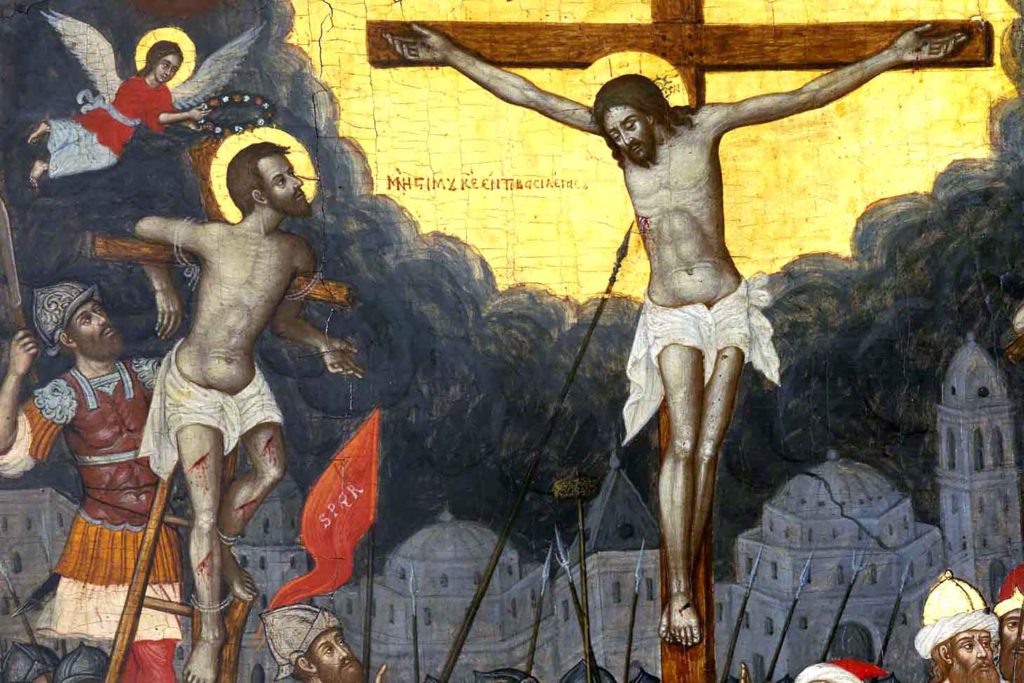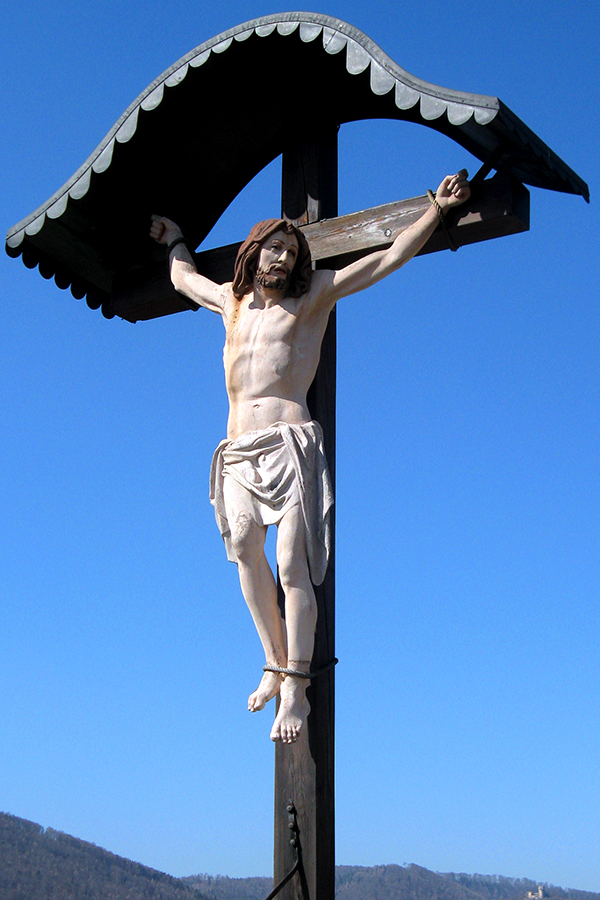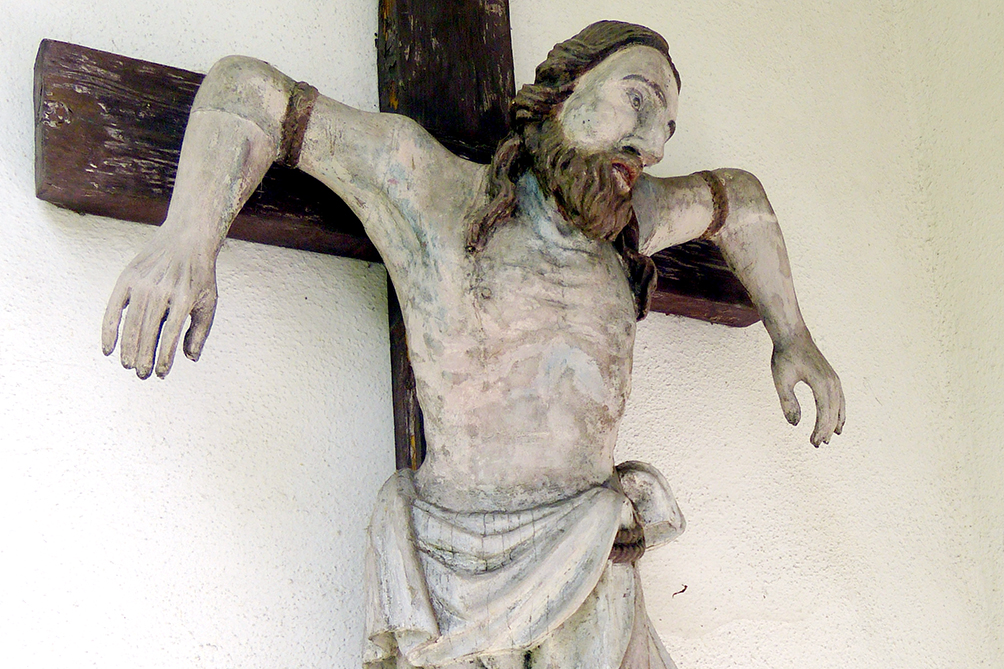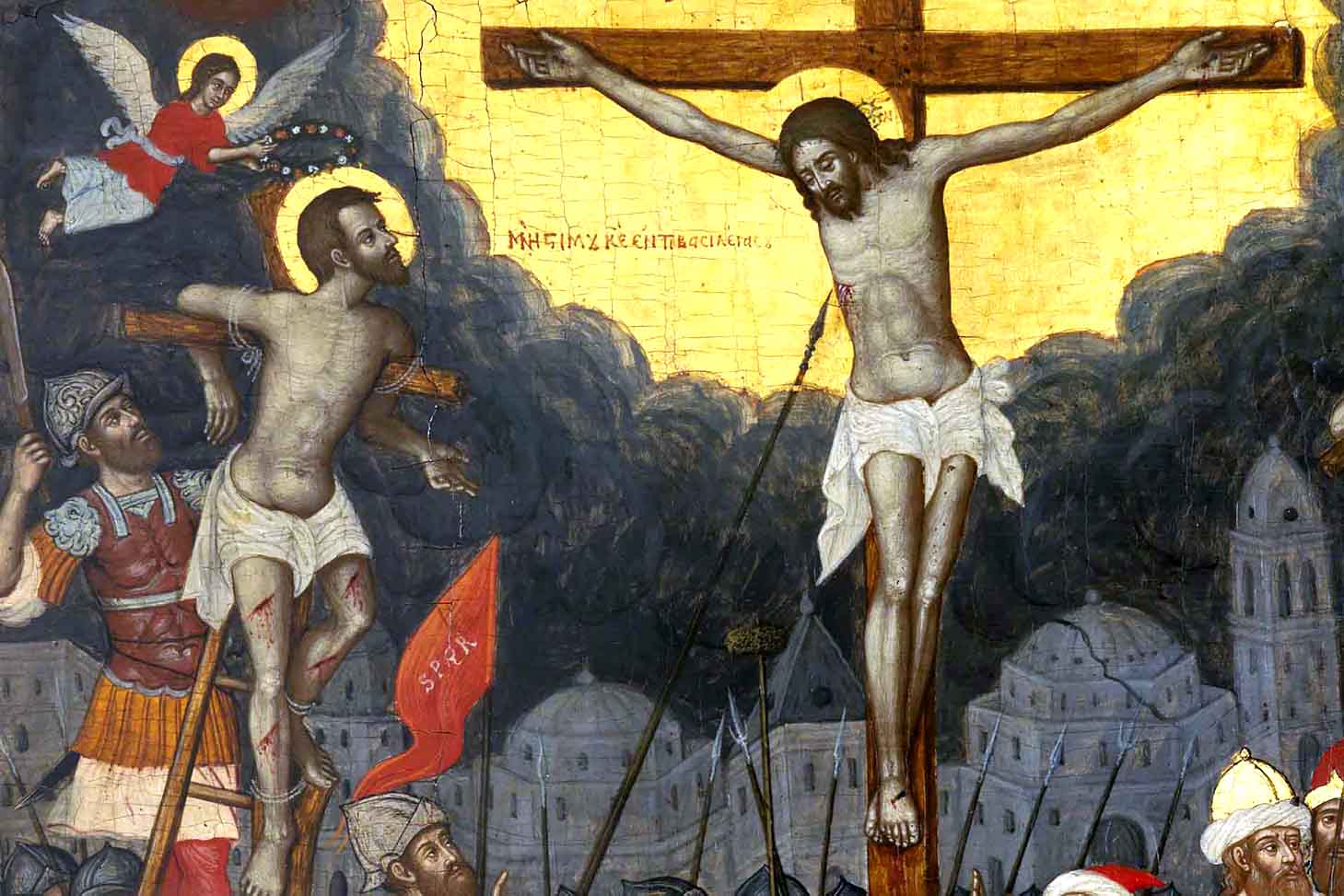
March 25
Of the two thieves crucified with Christ, Dismas would come to be known as the “Good Thief” who rebuked the other thief for reviling Jesus. In Luke’s Gospel (23:39-43), he accepts his guilt and proclaims Christ’s innocence. He asks Jesus to “remember me when You come into Your kingdom,” and Jesus promises, “Amen, Amen, I say to you, today you will be with Me in paradise.”


How an unnamed thief came to be called Dismas is less clear. One explanation is that early Syrian representations of the Crucifixion showed a sun and moon over the thieves’ heads; Syrian coins also showed a sun and moon with the words “east” and “west.” And “dismas” is similar to the Greek word for east.
This feast date was assigned because, by tradition, Jesus died on March 25. Often overshadowed by the Solemnity of the Annunciation, it’s no coincidence that these two fall on the same date as it reveals that Christ gave up His earthly life on the anniversary of the when he entered the world through the womb of His blessed mother.
It can be inferred from Scripture that St. Dismas was much worse than a thief as crucifixion was a form of capital punishment reserved for the worst of offenders. As opposed to simply having his hands cut off or being stoned to death, Dismas was “condemned justly” (Lk 23:41) to the tortuous death of a crucifixion. Crucifixion was also used as a warning to all those who would pass by and also as a sign of relief to those who had been terrorized by such criminals. As Msgr. Jean-Joseph Gaume points out in his book “The Life of the Good Thief,” this goes to show the greatness of the mercy of God that Dismas could come from such a lowly position.


Msgr. Gaume argues that Dismas’ conversion was that much more extraordinary because while the Apostles and other disciples witnessed Jesus’ miracles and saw Him at His greatest, Dismas saw no miracles, but rather saw Jesus at His weakest and most humanly shameful, yet still recognized His divinity.
St. Dismas is a patron of funeral directors, prisoners and repentent thieves, as well as the Diocese of Phoenix Office of Prison Ministry.






